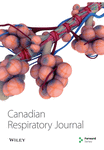Factors that Influence Emergency Department Visits for Asthma
Abstract
BACKGROUND: Asthma can usually be controlled through allergen avoidance and/or appropriate medication. An emergency department visit for an acute exacerbation of asthma often represents a breakdown in asthma management. Emergency department treatment results in significant health care expenditures and reflects a compromised quality of life.
OBJECTIVES: To identify risk factors associated with an emergency department visit for asthma.
METHODS: This case-control study compared 299 people (76% of 390 cases contacted) who attended one of two emergency departments in Alberta in 1992 and 1993 for an acute exacerbation of asthma (cases) with 212 unmatched community controls with asthma who were located by random digit dialing. Cases and controls were asked to complete a mailed questionnaire to obtain data regarding severity, visits to doctors and emergency departments, medication use, allergies and other triggers, and smoking history. Data analysis included bivariate analysis of risk factors and multivariate model development using logistic regression.
RESULTS: The response rate was similar between cases and controls. Cases were younger than controls (odds ratio [OR] 2.16, 95% CI 1.34 to 3.48) and more often reported their asthma to be severe (OR 4.25, 95% CI 2.24 to 8.06), and had experienced nocturnal symptoms (stratified OR range 1.36 to 6.82). Cases used more health care services in the previous year, had been admitted to hospital at some time for asthma (OR 1.62, 95% CI 1.10 to 2.38) and used more medication than controls.
CONCLUSIONS: Physicians and other health care workers should be sensitive to the risk factors and target interventions to high risk individuals.




